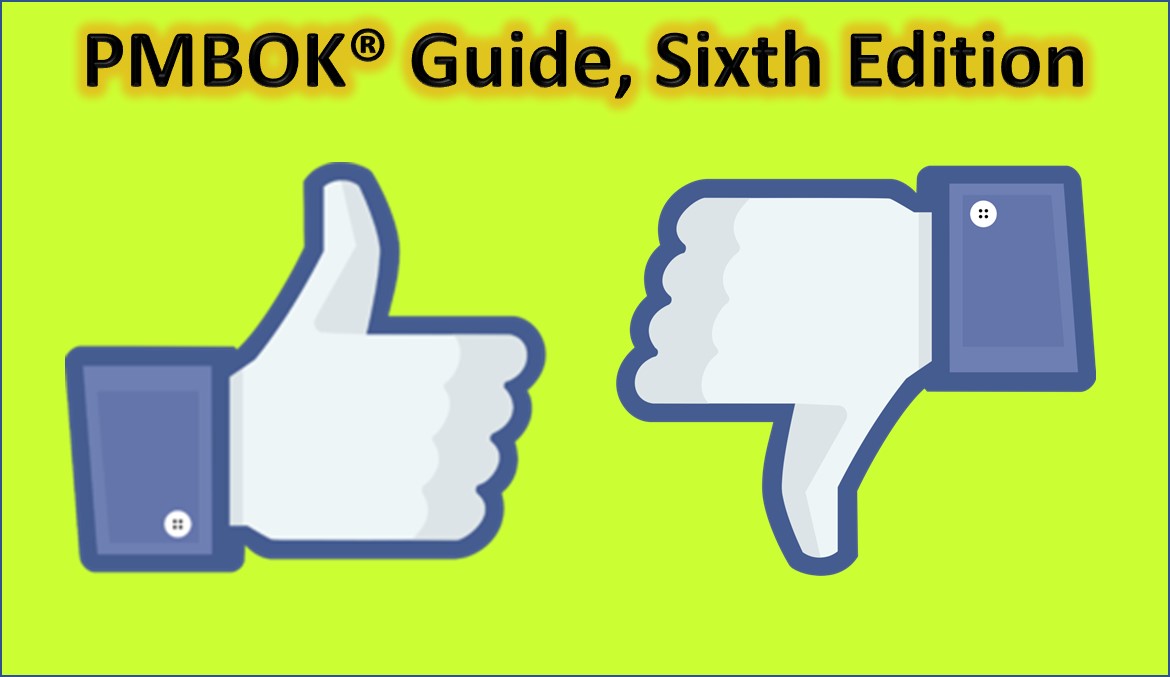The Sixth Edition of the PMBOK Guide has been out for about 6 weeks now and today we are finishing the second 5-day workshop on this guide. There are many things we like about the new edition and somethings we do not like.
Here are our professional views from the perspective of someone who has been using the guide since the first edition (my PMP was on the first edition) and who have also been delivering workshops on the guide since the second edition.
What do we like about PMBOK Guide Changes
Benefits Management
It is great that the guide finally recognizing the need to address benefits management. Many other organizations, professional associations, and even SUKAD have been addressing this topic for a decade or more. Well, better late than never.
Stage Gates
We understand that the guide is not a methodology so it cannot give a project life cycle with clear phases and gates, but at least a mention. We believe the first edition included the concept of gates but in the last few edition that had disappeared. I do not think you can find a section or even an image in the 4th or 5th edition of the guide covering gates. So we are happy to see stage gates now mentioned in the guide.
A recent book on capital projects by Paul Barshop from Independent Project Analysis stress that executives must ensure the use of a stage-gate model to deliver capital projects. CAMMP™ is a stage-gate model since the first version (2007).
Resource Management
This is another good change, to recognize the need to address all resources, not only HR. This has been in ISO 21500 and also in CAMMP™.
Other Good Changes
- The schedule chapter includes quite a few additions that are beneficial.
- Recognizing the need for knowledge management. Interesting to note that this was considered for the 5th edition but was not added.
We are still going through more and more details, so maybe we will add things in a future post.
What we do not like about PMBOK Guide Changes
Here is a brief on what we do not like.
- Continuing the practice of too many blank spaces on pages; which is probably adding a hundred page to the guide.
- Deleting the procurement closing process.
- Keeping the use of the term process groups despite the fact that closing is only one process now. So if PMI wanted to delete a process, then change the name from process group to process types or categories instead of changing the English Language.
- Process categories: the three categories added, in our views create added confusions. We like the intent but the way it is done it is not added value.
- Deleting some of the info on organizational structures, while adding complexity in this area.
- A large part of chapter 2 is too academic and theoretical, even for a veteran like me so I cannot imagine newcomers reception.
- The core purpose of the guide is “most projects most of the time” yet Agile is not most projects most of the time; so why the hype and emphasis on Agile? I can understand the need to address Agile concepts in Chapter 1 or 2, but to emphasize it in every chapter? This is bad and even ugly.
- The Guide size — did the guide really add the equivalent of 200 pages of good additional content? I doubt it. Does the current 800-page edition add significant value over the first, less than 200 pages edition? I doubt it. Yes, there are good additions but also some deletions. The problem, too much repetition leading to creating a huge book.
Mixed Opinion
Tailoring
Tailoring is clearly a subject where we have a mixed opinion. On the plus side, it is great that the guide is now emphasizing tailoring. It is important to stress that tailoring has been in the guide since the first edition but many miss the fundamentals truth about PM, which is PM must be adaptive; adaptive means tailored.
In 2007, we at SUKAD developed CAMMP™, The Customizable and Adaptable Methodology for Managing Projects™ because PM must be adaptive = tailored. Notice the name of the SUKAD Model, Customizable and Adaptable.
Back to the guide, although tailoring has always been there it was not given the focus like the current guide. So – tailoring is something we like. However, what we do not like, is the way the guide covers tailoring with a significant focus on tailoring by the PM at the project level instead of emphasizing that most tailoring, if not all, must be at the organizational level, in the OPMS (OPA using PMI-lingo). Refer to a couple of recent articles we have on this subject.
What do you like or don’t like?
Are you subscribed to our posts? It is easy – do not miss out and subscribe today (near the top right-hand side of the page).
[contact-form][contact-field label=”Name” type=”name” required=”true” /][contact-field label=”Email” type=”email” required=”true” /][contact-field label=”Website” type=”url” /][contact-field label=”Message” type=”textarea” /][/contact-form]

